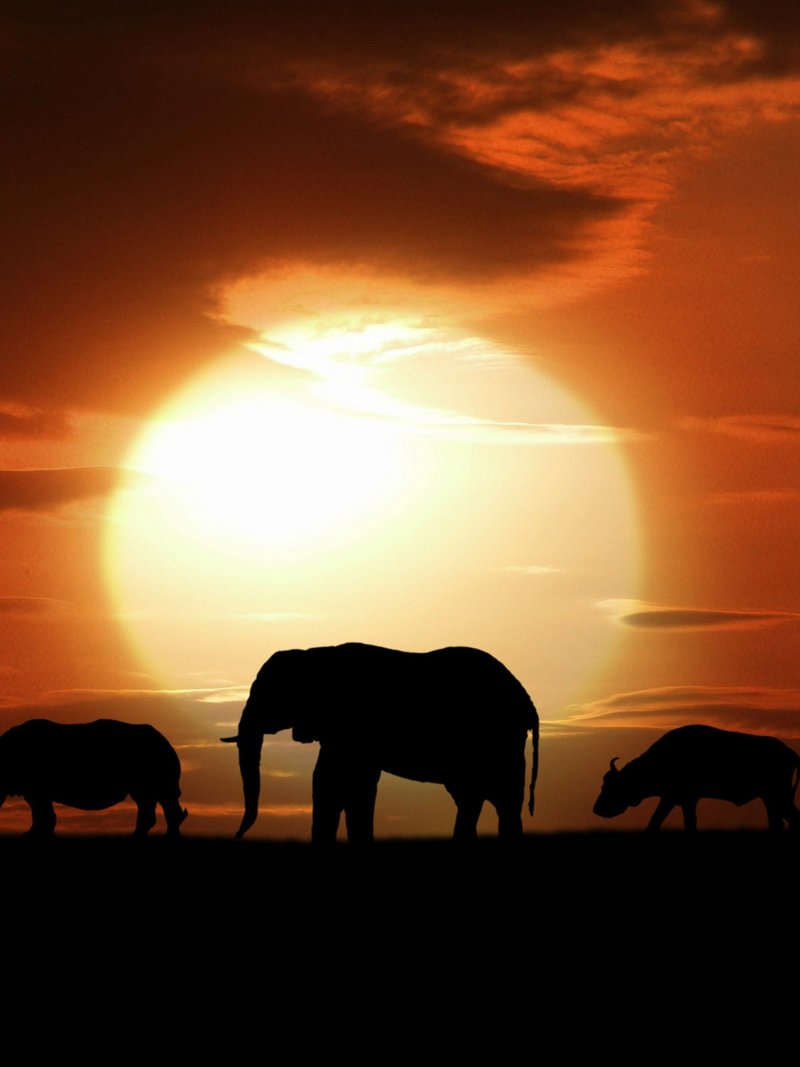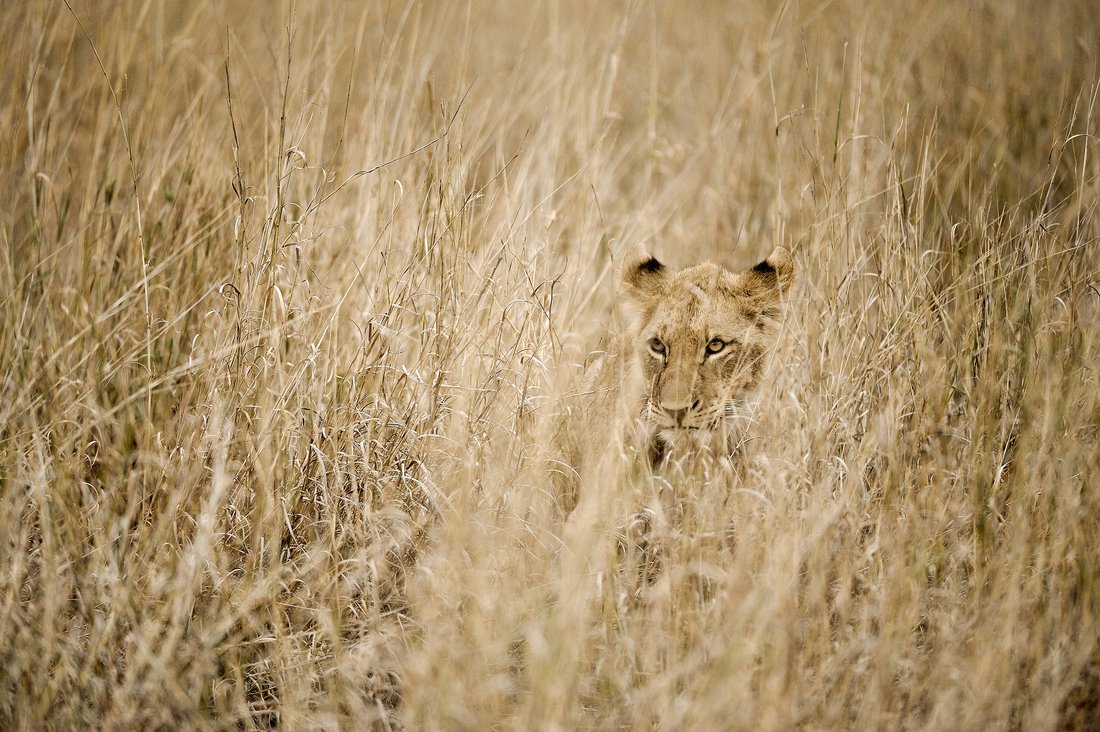Big Five Safari
Going on safari is an adventure full of exciting discoveries and unexpected encounters. Companies like Continental find themselves in a similar situation as they navigate an increasingly complex world of sustainability rules and governance. Regulations such as the Corporate Sustainability Reporting Directive (CSRD), the EU Taxonomy and the German Supply Chain Act require companies to uphold strict transparency and reporting standards. Along the way, plans may change, and surprises are inevitable – just like on a safari in search of Africa’s most famous wild animals. Our somewhat unconventional travel report reveals how the Big Five can help guide us though the ever-evolving landscape of regulations – and what sustainability managers at companies have in common with rangers in the savanna.
Big Five Safari

Going on safari is an adventure full of exciting discoveries and unexpected encounters. Companies like Continental find themselves in a similar situation as they navigate an increasingly complex world of sustainability rules and governance. Regulations such as the Corporate Sustainability Reporting Directive (CSRD), the EU Taxonomy and the German Supply Chain Act require companies to uphold strict transparency and reporting standards. Along the way, plans may change, and surprises are inevitable – just like on a safari in search of Africa’s most famous wild animals. Our somewhat unconventional travel report reveals how the Big Five can help guide us though the ever-evolving landscape of regulations – and what sustainability managers at companies have in common with rangers in the savanna.
Day 1: Arrival in the Wild
The sun bathes the airport in a glistening light. Stepping off the plane, we realize straightaway that this trip will be nothing like a resort vacation. The dry air and hot breeze stir up a sense of adventure. The excitement is palpable. We are here to see the Big Five, Africa’s most famous wildlife: elephant, buffalo, rhinoceros, lion and leopard.

The term originally comes from big-game hunting. But the ranking has nothing to do with the size of the animals. It is about how difficult they are to hunt. And we are not going hunting, of course. At Continental, we use the Big Five as a metaphor for the world of sustainability. The five animals represent the five major sets of rules and regulations that companies need to watch out for. Our safari adventure serves as an allegory – a way to illustrate the growing challenge of complying with statutory sustainability requirements. These requirements are complex. And, like on a safari, they come with their fair share of unique discoveries and unexpected surprises. This is why companies also need experts to guide them, like professionally trained and experienced rangers. That is the role of sustainability managers They face the Big Five with confidence and without fear, are well versed in the world of complex sustainability regulations, and are able to provide management with sound and competent advice – similar to rangers leading safari tourists through the savanna.
Back at the airport, we are greeted by the ranger who will be looking after us on this trip. “Starting tomorrow, we’ll see the Big Five,” he promises with a smile, betraying his love for this magical wilderness. “Many of these animals roam the savanna. Most of them were relocated to the reserve just recently.” On the drive to the national park, he shares his most important tips for the safari: follow the rules; be patient; and stay on the lookout for even the slightest movement. Nature rewards those who look carefully, he says. That is true in the savanna just as it is in the corporate world.
Day 2: Giants of the Savanna
Before sunrise, we climb into an open jeep and set off. We have barely been driving for 10 minutes when we spot by far the largest of the Big Five: the elephant. About 15 of them are at the riverbank, drinking and spraying themselves with water.
“Elephants are the giants of the savanna,” explains the ranger. They have a tremendous influence on the ecosystem. The Corporate Sustainability Reporting Directive (CSRD) has a similar impact on companies in the business world. It sets comprehensive standards for sustainability reporting, elevating it to the level of financial reporting. Furthermore, it has a significant influence on how companies shape their sustainability strategies. Almost every company in Europe will be affected, bit by bit. The CSRD is massive and all-encompassing, just like these pachyderms of the savanna. And, like the elephant, it does not travel alone. It comes with an entire herd – of instructions, practical tips and interpretations. One member of the herd is the European Sustainability Reporting Standards (ESRS). Their scope alone is equivalent to the effect of several more elephants, possibly with additional specifications to be added at a later date – like other pachyderms emerging out of the bush. And like the herds in the savanna, these regulations are also continually on the move – they do not allow companies to rest.
Despite their size, elephants move almost without making a sound. That makes them difficult to find, explains the ranger, who over his years of experience has developed great respect for these mighty animals. The herd we are admiring now has only been living in the national park for a short time, with travelers first getting to see them during the 2024 safari season, the ranger continues. The same applies, figuratively, to companies like Continental, In 2025, they are required to report on the 2024 fiscal year for the first time according to CSRD requirements.
Day 3: Unpredictable Heavyweights
Today we head north, toward an area swathed in grasslands. “We should have a good chance of spotting a herd of buffalo here,” says the ranger. And he is right: just a few minutes later, hundreds of buffalo sweep majestically across the plain. Their distinctive downward-curved horns immediately catch our attention. Most of the animals stop to graze. Some stare at the jeep, keeping a safe distance.
The herd appears peaceful. But caution is still advised, warns the ranger, saying: “Buffalo are unpredictable. One minute, they can be calm and quiet; the next, their demeanor changes completely. The safari guides still cannot explain this behavior exactly. Companies face a similar challenge in interpreting the EU Taxonomy. This “lead animal” of the European sustainability rules has spawned countless delegated acts, FAQs and more. Like buffalo are strongest in a herd, these rules demonstrate in combination the power green business activities are already wielding in companies. But the overall picture often remains unclear. Because just as a herd of buffalo can still puzzle rangers, even experienced sustainability experts struggle to keep track of the many rules of the EU Taxonomy. Not least when the herd has become so large and keeps on growing each year.
The same is true of the number of buffalo in the national park. The first photos of them amazed the public in the spring of 2023, having been taken during the 2022 safari season. This was also when companies first had to disclose how sustainable their operations are and show that their business activities are “Taxonomy-aligned” – in other words, that they comply with the EU’s strict sustainability criteria. However, the requirements change each year – just like the pictures of the buffalo herd in the savanna change from season to season. That is not something that generates much enthusiasm among those involved – whether rangers or sustainability experts.
Sustainability regulations are like a safari: you must remain vigilant at all times, because you never know when you might encounter something new. If you don’t stay on your toes and keep looking ahead, you’ll quickly get left behind. That’s why companies need a culture of iterative working – rapid cycles, flexible approaches and constant learning. This is the only way you can remain ready to act in this dynamic environment.
Day 4: Journey Back in Time
The next day begins with a special mission: our group wants to track down a rhinoceros. As we drive, the ranger explains that the endangered animal has poor eyesight but excellent hearing and a keen sense of smell. “So we need to tread carefully,” he warns. “Rhinos are usually peaceful. But they can charge suddenly if you do not follow the rules and they feel threatened.” That is something the rangers know all too well, but they repeatedly have to explain to the tourists because the animals seem so calm at first sight.
The search continues. The ranger keeps our spirits up, explaining that the animals often roam off the beaten track. And then, suddenly, a rhinoceros appears in view, grazing in the shade of an acacia tree. Our safari suddenly feels like a journey back in time. With its imposing stature, the animal is an impressive sight.
Also imposing for companies is the German Supply Chain Act (Lieferkettensorgfaltspflichtengesetz – LksG), which obliges businesses like Continental to ensure that human rights and environmental standards are upheld throughout their supply chains. Dealing with the LksG, however, is tricky. It can quickly become a stumbling block if processes are not properly implemented. This is also because the full scope of the LksG's legal requirements has been difficult to grasp since it came into force in 2023. There are striking parallels here with our safari tour as well. The rhino has been roaming the savanna since 2021, and official tours began in 2023. The rangers have taken many photos of the rhino, but most of them are a bit blurry. So there is still much debate over what you can actually see in the pictures and what this means. This uncertainly often means it is difficult to keep track of the rhino – similar to the LksG.
The rhino we encounter on our safari seems a little worn out. Maybe the lion is out there, waiting to strike. Or perhaps the rhino is just taking a short break.
Day 5: King of the Beasts
It is still dark when our group sets off. The morning air is refreshingly cool. Then the first rays of the dawn sunshine bask the savanna in a warm glow. Our mission today is to track down the king of the plains. “Lions aren’t easy to spot,” says the ranger. “They are nocturnal and usually hunt under the cover of darkness. During the day, they are well camouflaged and are masters of sneaking up on their prey.”
For a long time it looks like we won’t get a glimpse of these majestic animals. But then we see them: a pride of six lions resting peacefully under an acacia tree. Two lionesses keep watch over the three cubs, while the male lion dozes lazily in the shade. Like many of the other animals we have encountered, the male lion hasn’t been in the national park for very long. He fought his way to the top in 2024, entering the savanna with his own pride. He is still settling into his position of dominance, and it could take until 2028 before the pride is fully active and begins to rule the savanna.
Like a pride of lions in the savanna, the Corporate Sustainability Due Diligence Directive (CSDDD) can also set the tone for an entire company. The EU directive must be incorporated by EU member states into their national laws within the next few years. While the exact timeline is currently being renegotiated, it is already clear that the directive will assume a central role. It will expand on the German Supply Chain Act and make adherence to human rights and environmental standards along value chains even more binding. And just as tourist should not exit a safari jeep without their ranger, companies will rely on the expertise of their sustainability managers to guide them through the tangled undergrowth of the CSDDD.
Day 6: Master of Camouflage
The final day of our safari promises to be the most challenging. “If we want to find a leopard, we have stay alert,” says the ranger as we set off. “They’re rare solitary animals, masters of camouflage, that like to rest in the treetops.” So the search for the leopard takes longer than it does for the other animals. The ranger explains that leopards can go undetected for long periods. They sneak up silently and strike with lightning speed. On top of this, the agile animal has the strength to drag its prey all the way up a tree.
The German Corporate Governance Code (Deutscher Corporate Governance Kodex – DCGK) is equally silent and stealthy in its approach. Just like the leopard, however, it possesses plenty of power. The DCGK is a collection of regulations governing corporate governance that are based on legislation. In recent years, it has introduced more and more sustainability considerations into the work done by executive boards and supervisory boards – even if this was not always obvious at first sight. Take, for example, the supervision of reporting and strategy integration. However, experienced sustainability managers know what is important and are prepared down to the smallest detail. Like them, skilled safari rangers know precisely how to spot the leopard in the large reserve and get tourists the unforgettable photo they have been waiting for. Our ranger is no exception, and he suddenly changes direction. He has another idea where we might find the last member of the Big Five. We leave the open grassland and enter the denser thorn-bush part of the reserve. The ranger stops the jeep right in the middle, and then stares into the bushes for several minutes. Then, suddenly, the tourists see it – the leopard in all its glory, emerging from behind a bush. It had been there the entire time – silent, hidden, observing its surroundings. Its fur shimmers like gold in the evening sun. What a sight.
On Safari
Day 7: Last Day – Lasting Memories
It is still early when we drive back to the airport. We are sad to leave – seeing the Big Five was a once-in-a-lifetime experience. “A safari is a memory you’ll carry with you for the rest of your life,” says the ranger. Not least because this trip teaches you so many things that you can apply to other areas of your life. An adventure like this is not something you should embark on alone, he says: “It takes a motivated group of people.” A group like ours – vigilant, inquisitive and willing to share their experiences. What he does not say, but what we all understand, is that it also takes a skilled guide like him. Someone with a clear plan who can adapt when something unexpected happens. Someone who doesn’t just focus on the Big Five, but also keeps an eye on smaller animals that should not be underestimated – like the EU Deforestation Regulation and the modern slavery acts enacted by various countries.
As a parting gift, we and the other travel groups at the lodge receive a brochure advertising plans to develop the reserve – with safari bus tours, paved trails and picnic areas for breaks. Some of the groups are happy that the safari was such a wild adventure, while others look forward to more creature comforts on their next trip. But regardless of the level of comfort, the rangers and guides are the key to a great safari – and, within the company, help navigate the various regulations to ensure a sustainable transformation.
Sustainability Safari – the Basics
How to make your adventure a success – and handle encounters with wildlife. Experienced rangers have compiled the essentials for a successful sustainability safari.

Our 2024 Sustainability Report covers Continental management approaches on environmental, social, and governance sustainability matters. Starting this year, the sustainability report is part of the annual report.


















